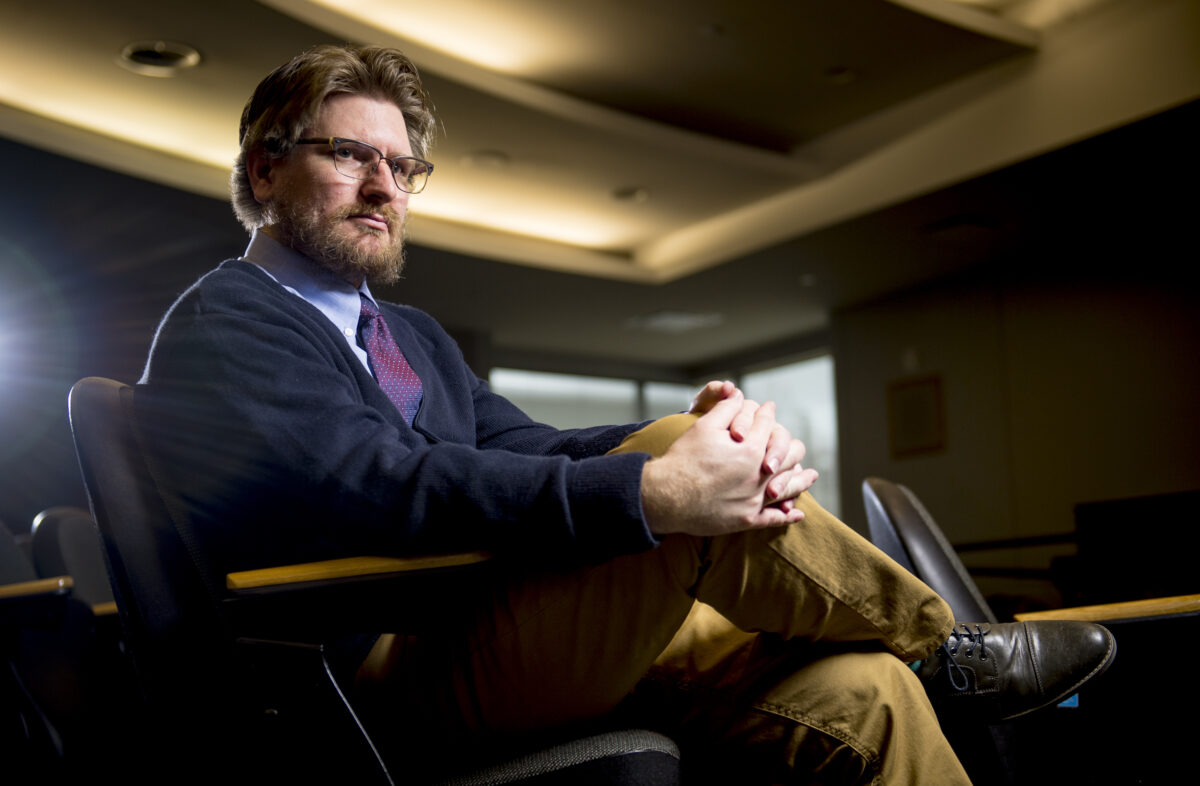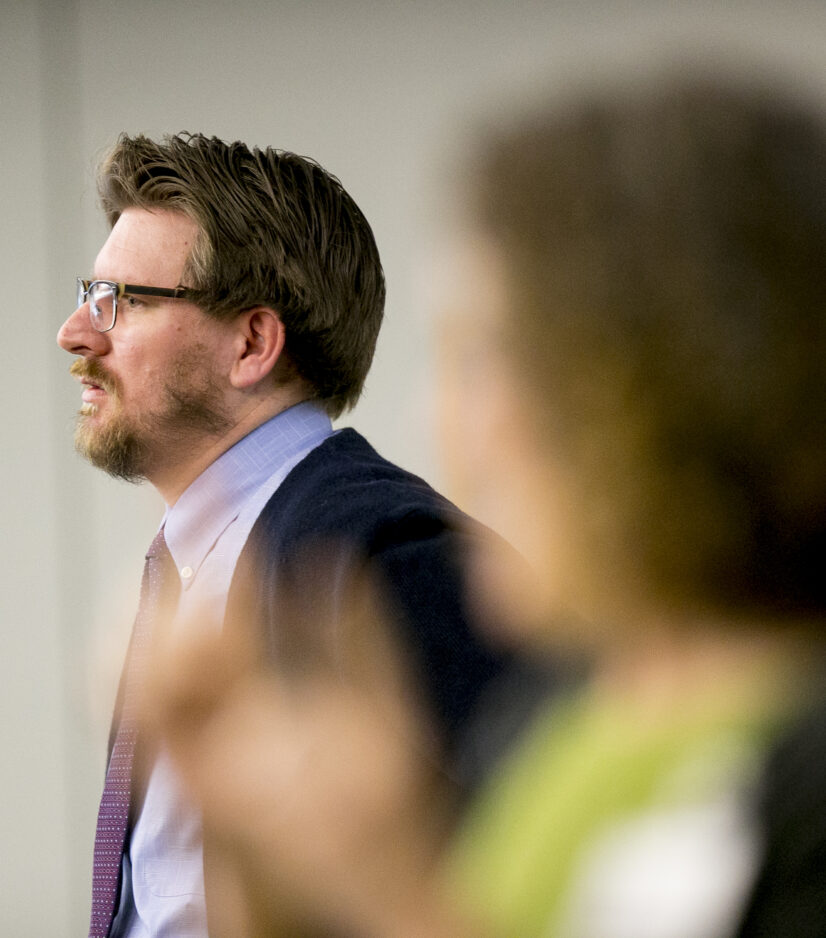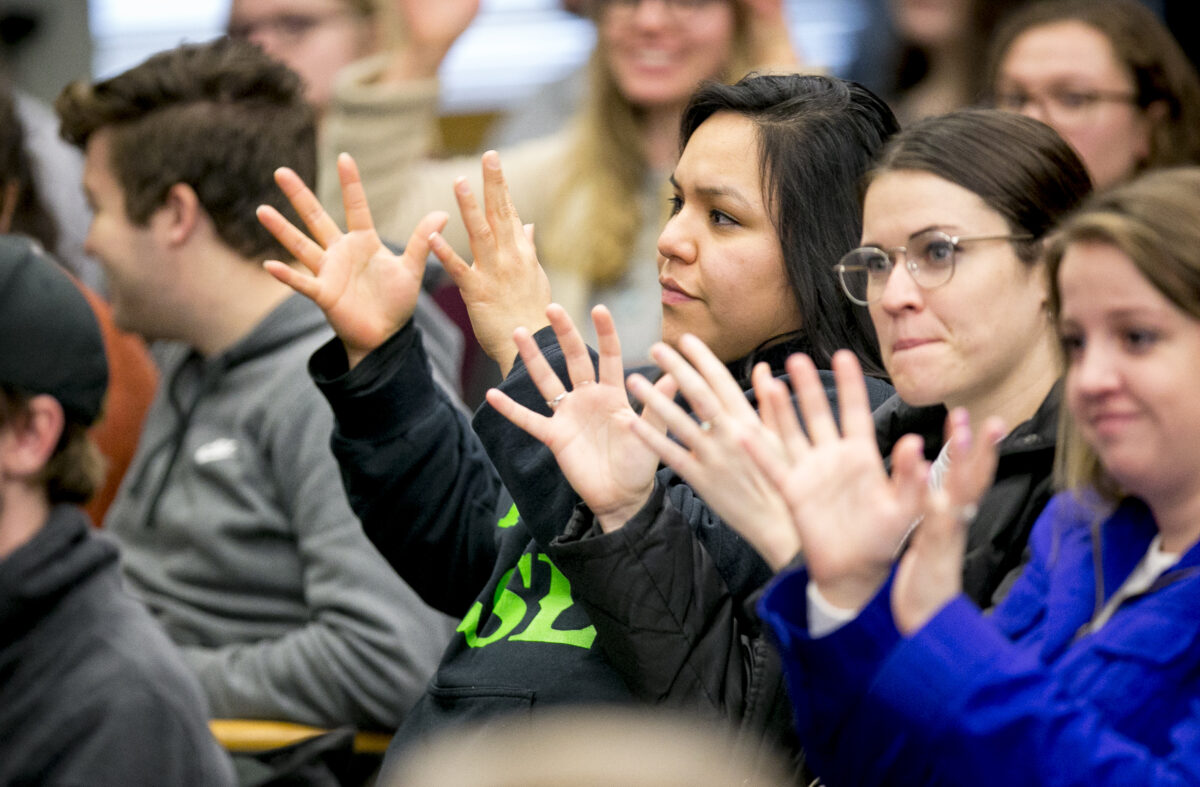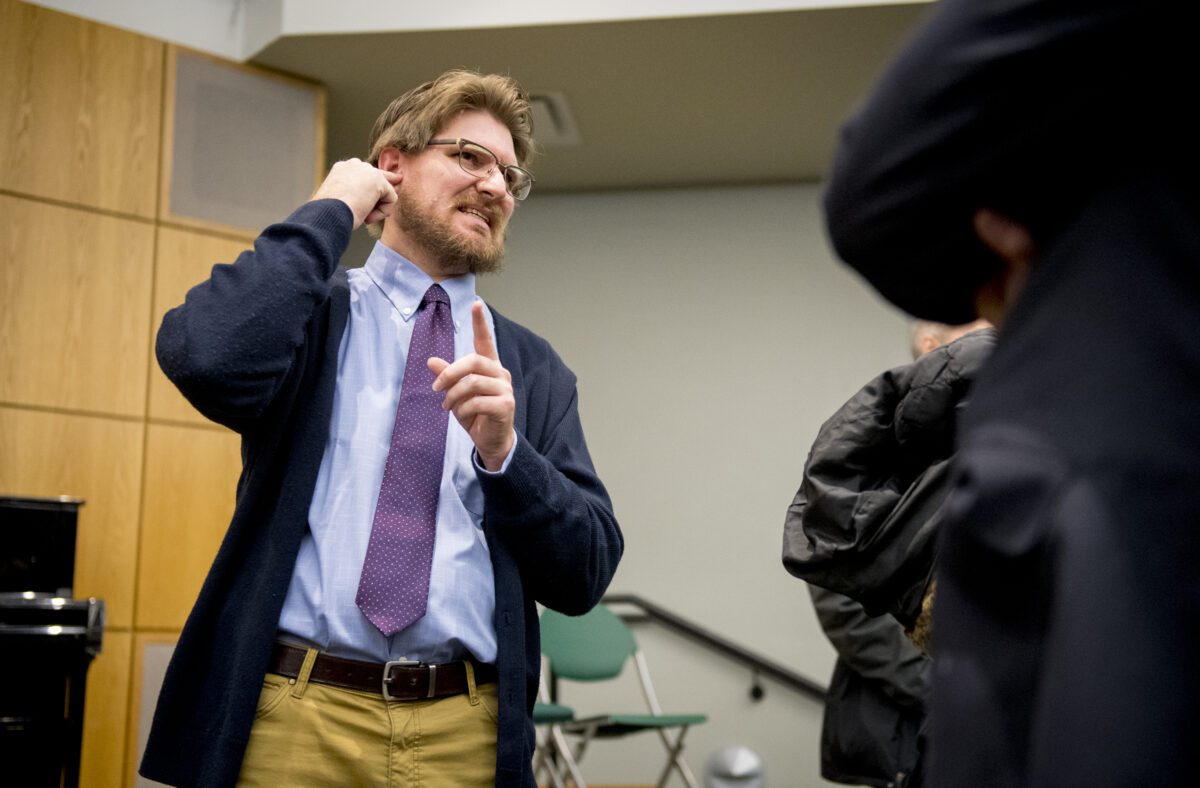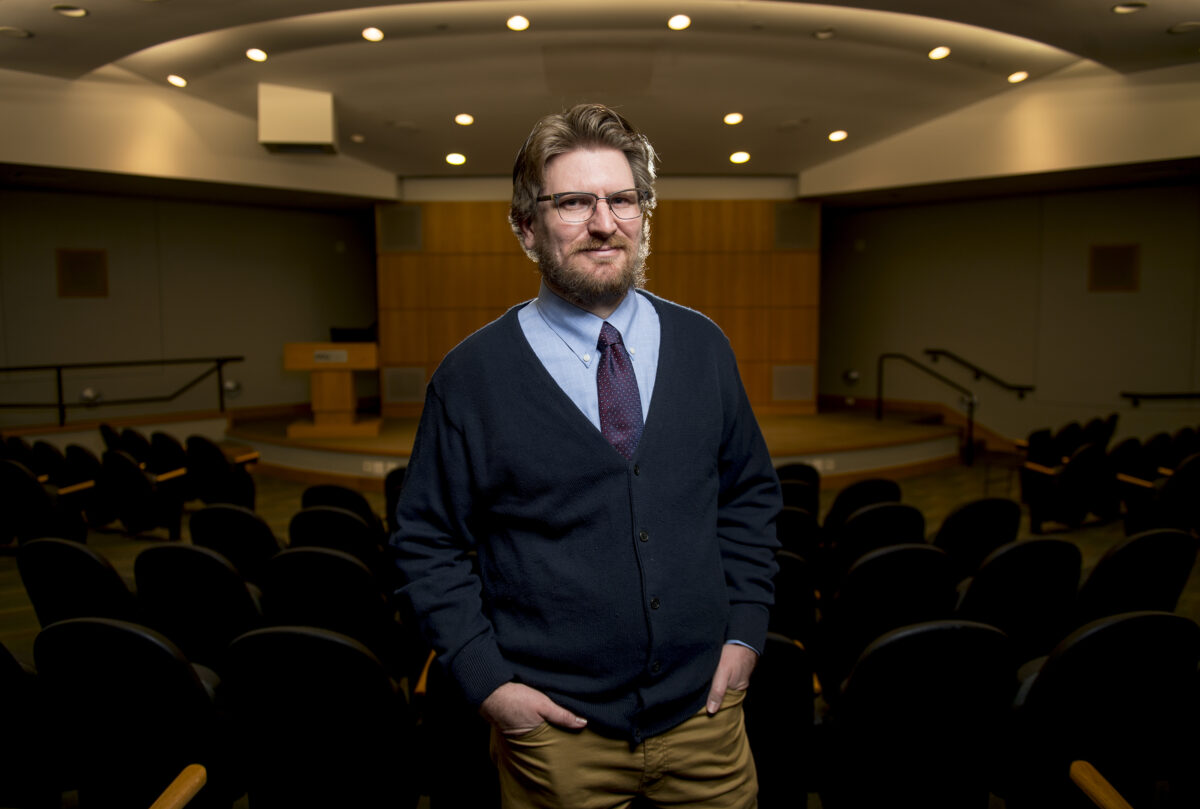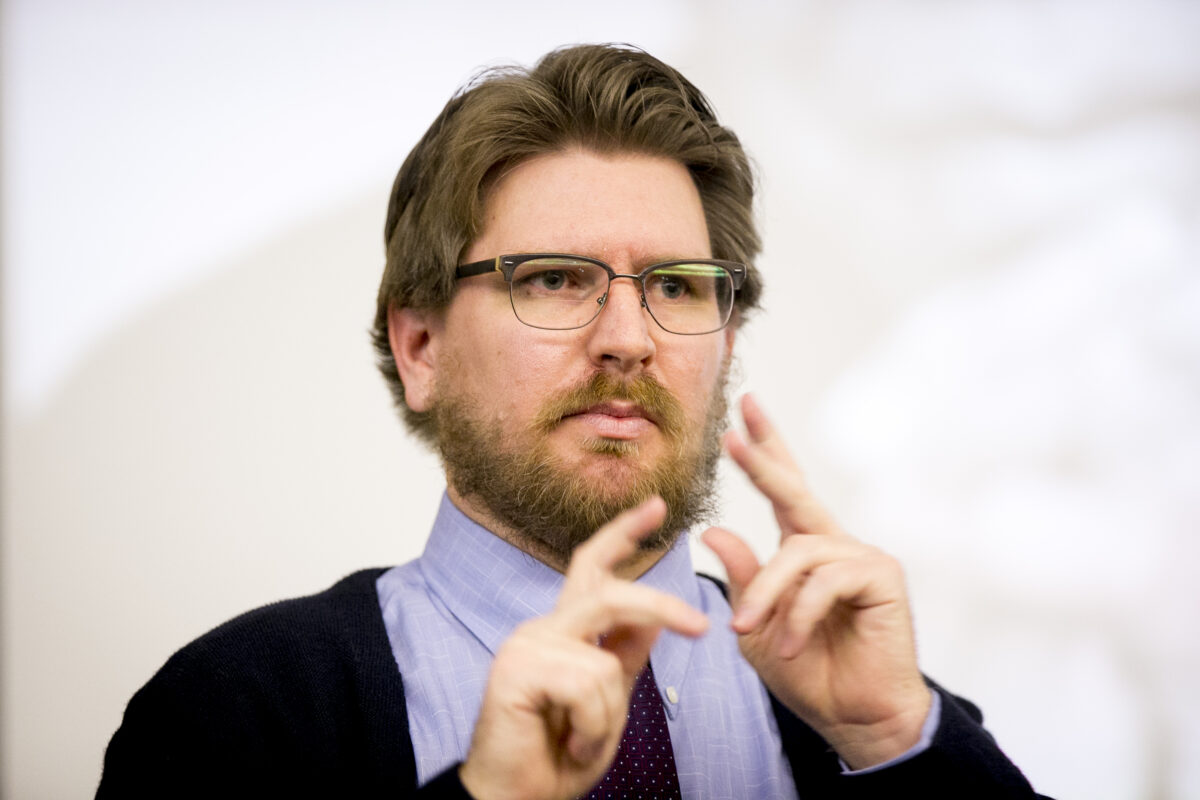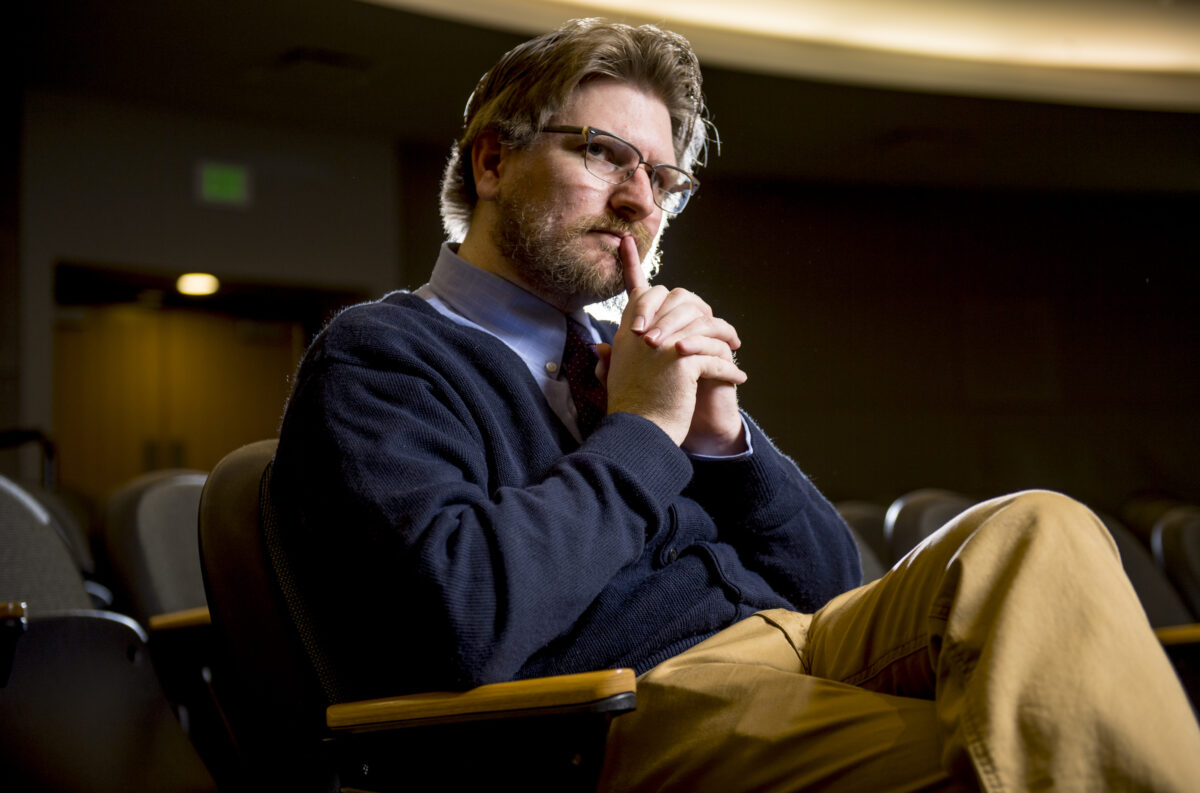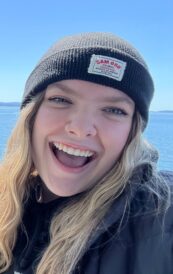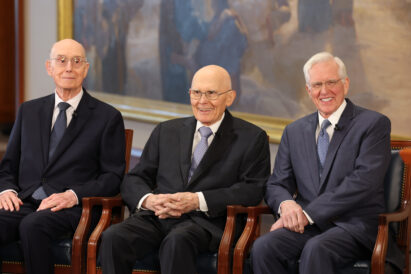Interpreters, interpreting programs bridging cultural gaps between hearing and the deaf
The following is the second article in the six-part series Deaf in Utah. The next article will run on Feb. 9.
Michael Ballard’s students can have a bit of culture shock when they first enter his deaf studies classes.
“It is two different senses,” Ballard said in American Sign Language, according to a spoken English interpreter. “One is hearing, one is sight, and that is very difficult to internalize if you weren’t raised in a visual-centric learning mode.”
Ballard, who is deaf, is an assistant professor of ASL/deaf studies at Utah Valley University.
About two to three of every 1,000 children born in the United States have detectable hearing loss, according to the National Institute on Deafness and Other Communication Disorders. About 15% of American adults report trouble hearing, with hearing loss becoming more common later in life.
There are no available statistics on how many deaf individuals use ASL nationwide. Not every deaf individual uses ASL, and each country has its own form of sign language.
Sign language is unique as a language in that it requires a hearing person in order to interpret between a deaf ASL user and a hearing spoken English user, meaning that hearing interpreters are constantly entering the deaf world.
At UVU, ASL is the third-most spoken language on campus, according to the spring 2019 student opinion survey, with 5.1% of those who took the survey stating that they understand the language. The majority of those students have learned it at UVU, with only .1% of the respondents answering that ASL is their native language.
Some of Ballard’s students are future interpreters, while others are taking his classes because the courses are required for their programs or because they’re trying to learn the “why” behind the language.
As his hearing students learn ASL and enter the deaf world, they are breaching the divide between the two populations — and drawing them closer together.
“If earth were a garden, deaf people are a one-of-a-kind flower,” Ballard said. “And if you love gardening, we would love deaf people. We would want to understand deaf people and we would take the language and the language the deaf community is using, but that starts with love.”
Visas to the deaf world
There’s a delicate relationship between interpreters and the deaf clients they provide services for.
“I see tension, but I also see affection and appreciation,” said Cody Simonsen, a founder and the director of operations for 5 Star Interpreting, an ASL interpreting agency based out of Provo.
Simonsen said there’s a spectrum of relationships between ASL interpreters and the deaf, from interpreters who are fully integrated into the deaf world, to those who are only involved with the deaf while they’re on the job interpreting.
Simonsen, who is hearing and is the child of deaf parents, views the deaf world as a foreign country and his interpreter certification as his visa allowing him in as a guest.
Another way he describes it is through a Harry Potter metaphor used in academic literature about the deaf world. Under the metaphor, Deaf people are the wizarding world. Children of deaf adults, like Simonsen, are seen as Squibs, as they have access to the wizarding world, but can’t perform “magic.”
Simonsen and Ben Daniel, who is deaf, formed 5 Star Interpreting in 2016 as a way to close what they saw as a disconnect between the deaf and businesses that staff interpreters.
“We wanted to make a difference instead of complaining about it,” Simonsen said.
With about 200 freelance interpreters under their umbrella, the company keeps track of the interpreters’ experiences and works to match interpreters with the jobs that come in. Simonsen said the deaf have historically been removed from the process of picking an ASL interpreter. 5 Star Interpreters will reach out to the deaf clients to ask if there’s an interpreter they prefer, something Simonsen said gives power back to the deaf and something he sees as a future trend among interpreting agencies.
He points to Salt Lake Community College and UVU as Utah’s powerhouses for interpreting programs. Simonsen, who went to UVU, said he likes what the university is doing with internships and how programs reward students for taking certification exams before graduation. But, he said, students can always be more prepared.
“I see students leave school and they aren’t ready, and the only place they are signing is at school,” he said.
He suggests for students to take interpreting certification exams before they graduate.
Simonsen said there’s enough interpreters in the area to meet the current demands.
“I wouldn’t say that there is a shortage of qualified interpreters to handle urgent, last-minute needs or even advanced booking,” Simonsen said.
A popular program
Ballard points to media such as the TV show “Switched at Birth” for helping to draw hearing students into ASL and deaf studies programs.
“It is getting popular,” Ballard said.
There were 28 students in UVU’s ASL and deaf studies education program in 2019 and 32 in 2018. There were 203 students in the deaf studies program in 2019, up from 180 in 2018.
Ballard teaches his classes in ASL, something he sees as critical.
“For me, it is better to teach in my own language because it is my culture, my values, my beliefs and I want to deliver in a system so they can receive it,” Ballard said.
Teaching ASL or deaf studies without deaf faculty, he said, is missing out on the lifeblood of ASL.
“Learning a language, sign language, without deaf people is kind of like boiling water with no water, or trying to swim without water or having food with no substance,” he said.
Ballard said UVU has become one of the nation’s top universities for deaf studies through its Deaf Studies Today conference, where scholars and students gather to celebrate deaf culture and share solutions on issues in the deaf community.
He’d like to see more people who know ASL in health care, specifically, but he said that doesn’t happen. Some interpreters are good in those situations, he said, and some aren’t.
He wants more people to graduate with ASL experience.
“I am happy with the graduation rates, but we need more, of course we need more,” Ballard said.

